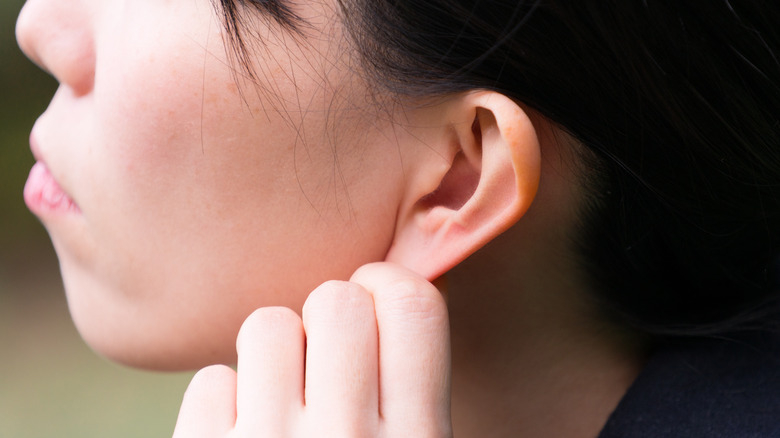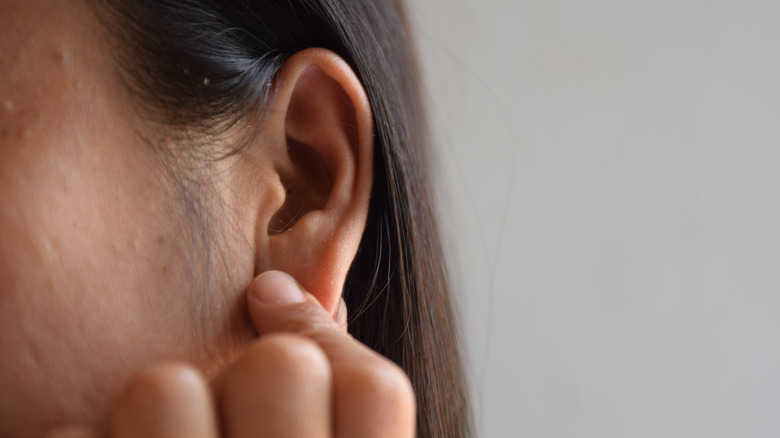What It Means When Someone Touches Their Ear
The world of body language can be a confusing yet very intriguing thing to study. This is especially true in current times, since a lot of people have had to rely on different social cues during the pandemic from standing far apart to not being able to see if someone is smiling or frowning. And while it's been imperative to avoid touching your face with your hands to stop the spread of coronavirus, frequent touching of the face, hair, and ears is one of the most common habits, according to the University of Maryland.
When it comes to the ears, a lot of meaning can be derived from the simplest of actions. Whether that's touching, pulling, rubbing or even scratching behind the ears. You may already be familiar with ear touching as a sign of someone lying (via Speeli). But, what does it generally mean when someone touches one or both of their ears during a conversation?
Pulling the earlobe can be a sign of indecisiveness
The most common form of body language with the ears comes in the form of touching, rubbing, or scratching the earlobes, according to Science of the People. This is often referred to as a "self-soothing gesture," which subconsciously happens when a person feels nervous or anxious about a given situation. Less commonly, it can also be a subconscious way to "block out" what they're hearing. Sometimes, scratching behind the years occurs "during situations of conflict" according to research conducted by Dutch biologist Nikolaas Tinbergen (via APA PsycNet), as a coping mechanism to "ease tension and stress" in certain environments.
Pulling on the ears can be a sign of indecisiveness, according to Thriveworks, as the action typically occurs when someone is having "a difficult time making a decision." Business psychologist Andrea Miriello also notes that this motion can be an "attempt to stop what's being heard," as can rubbing the back of the ear or even putting fingers inside the ear.

